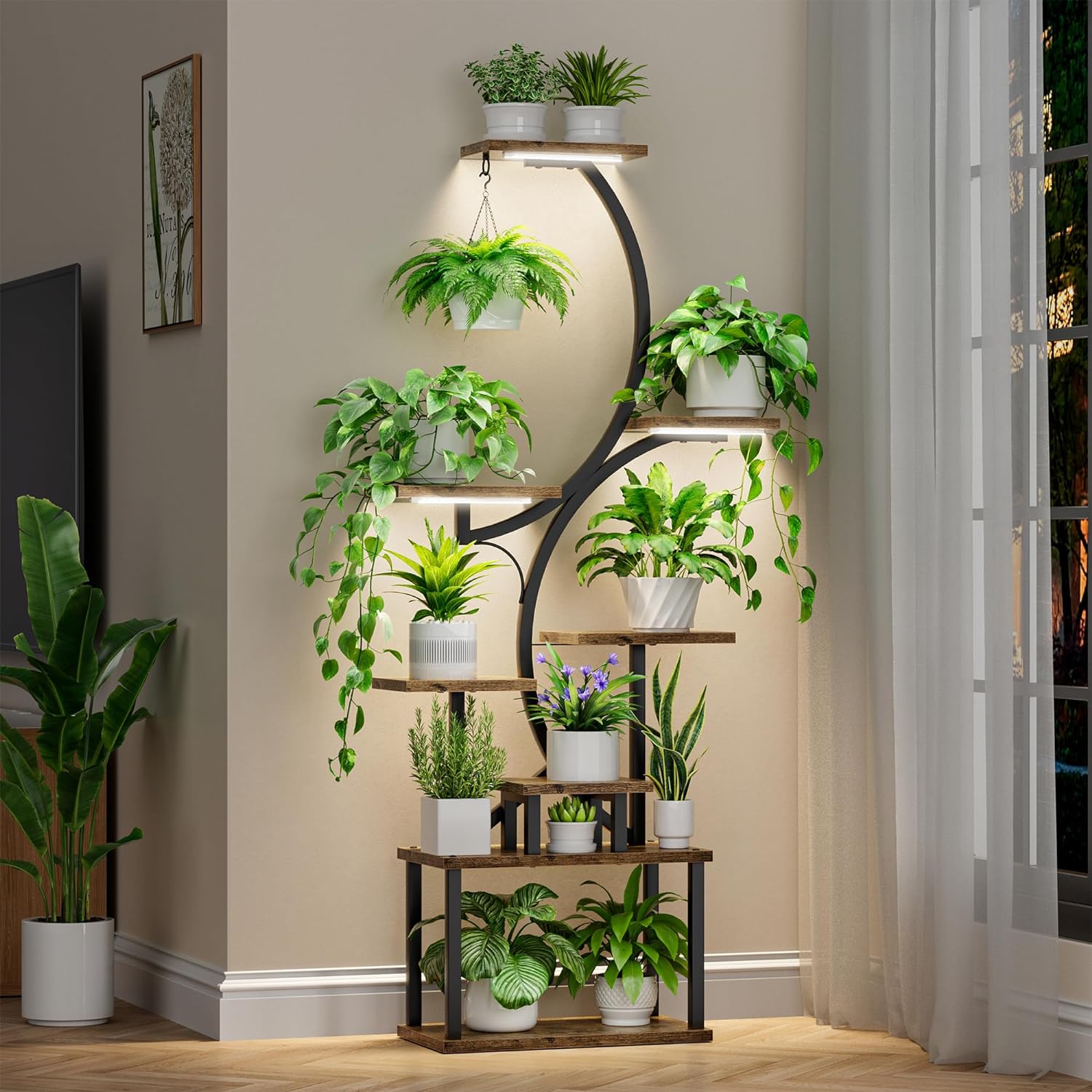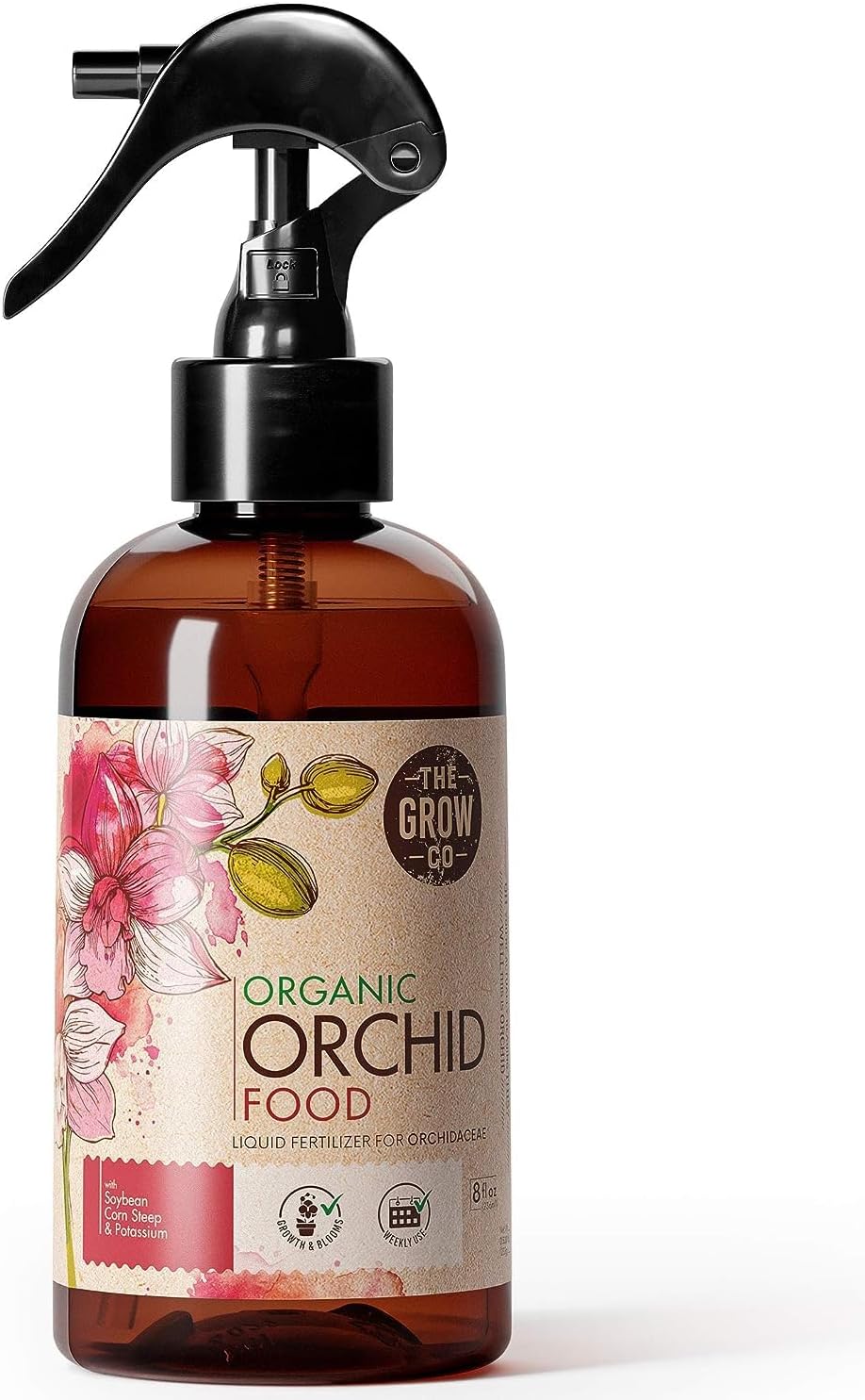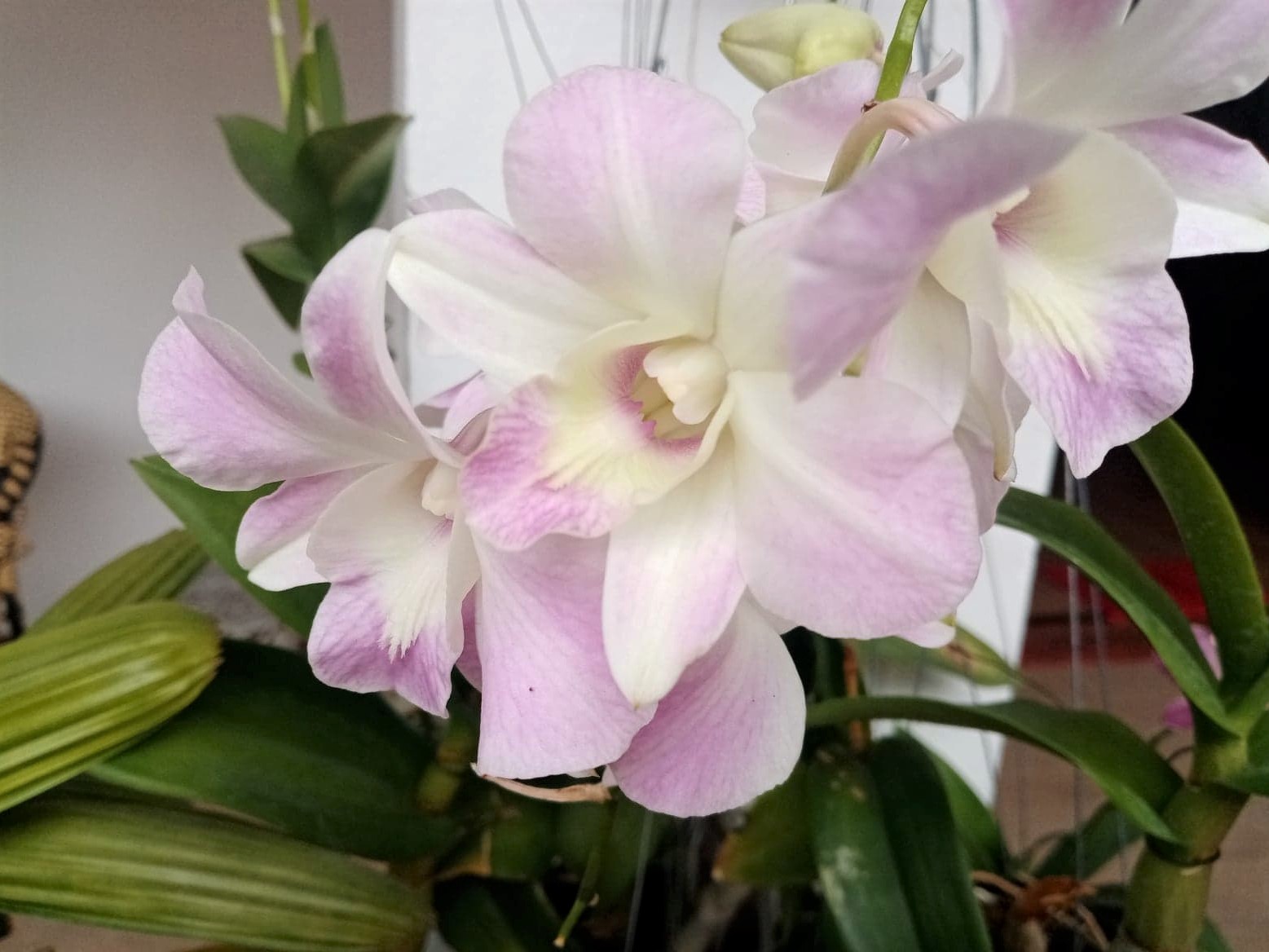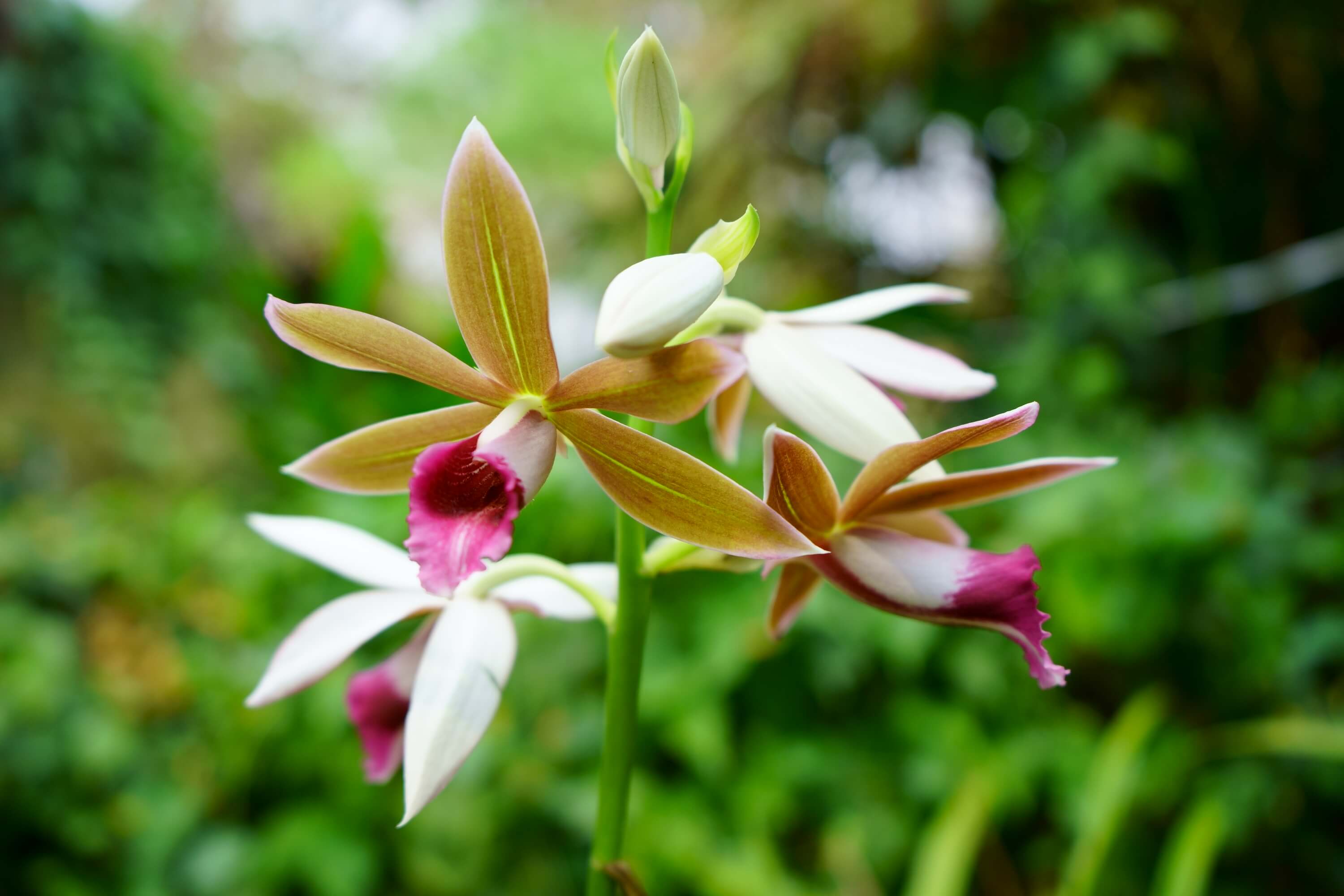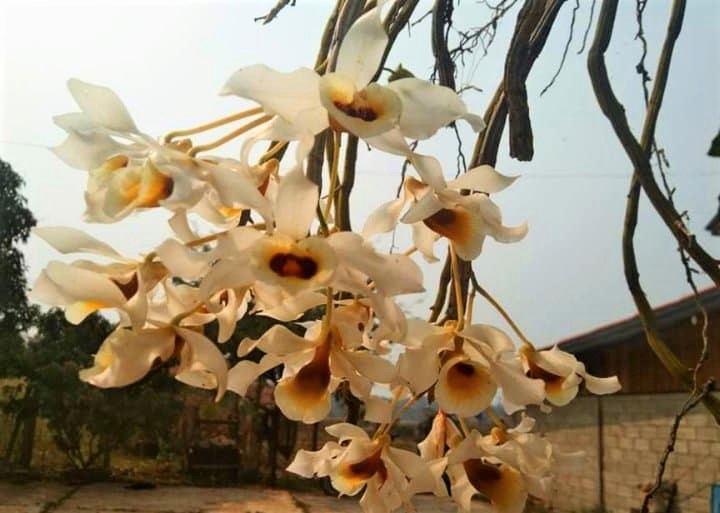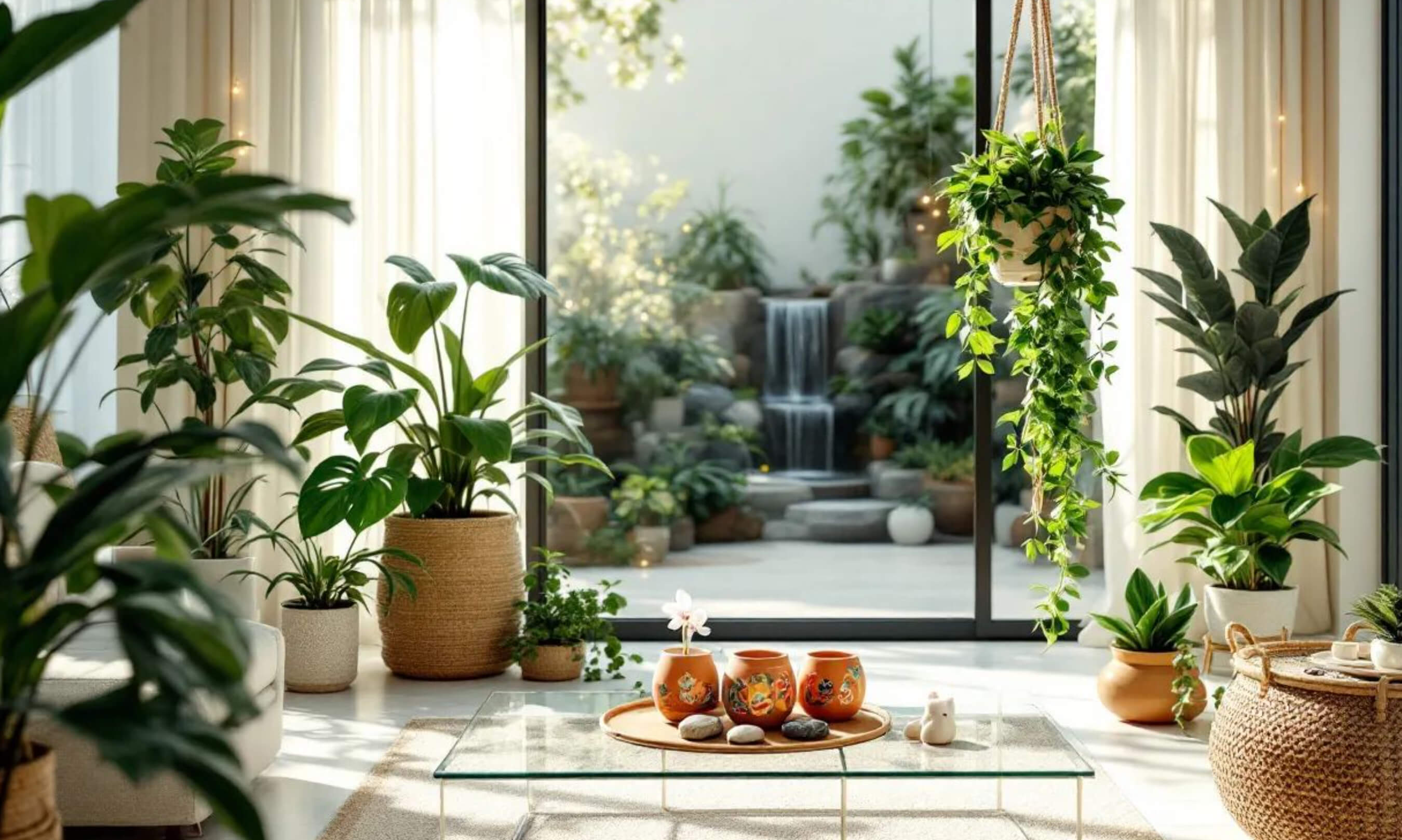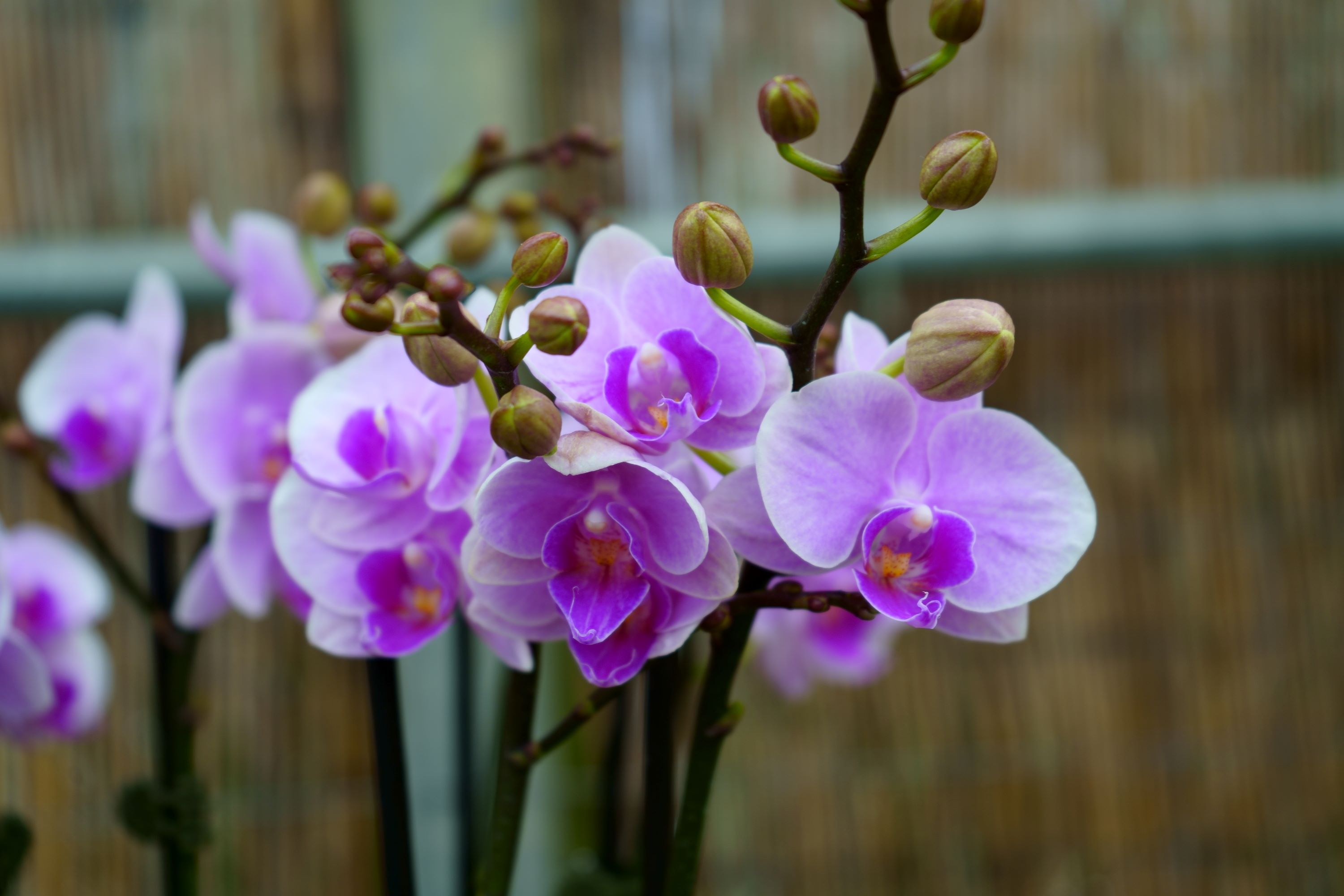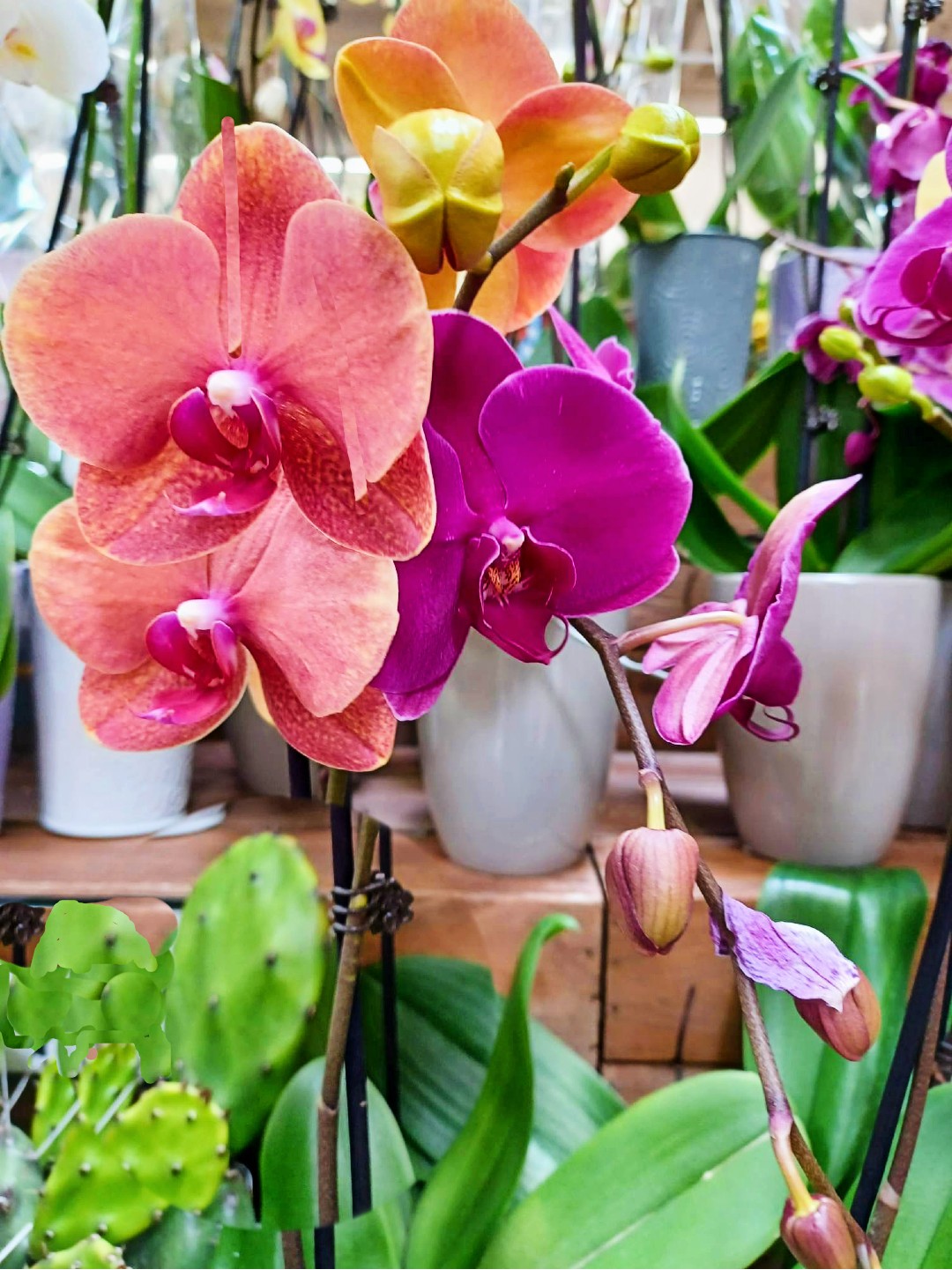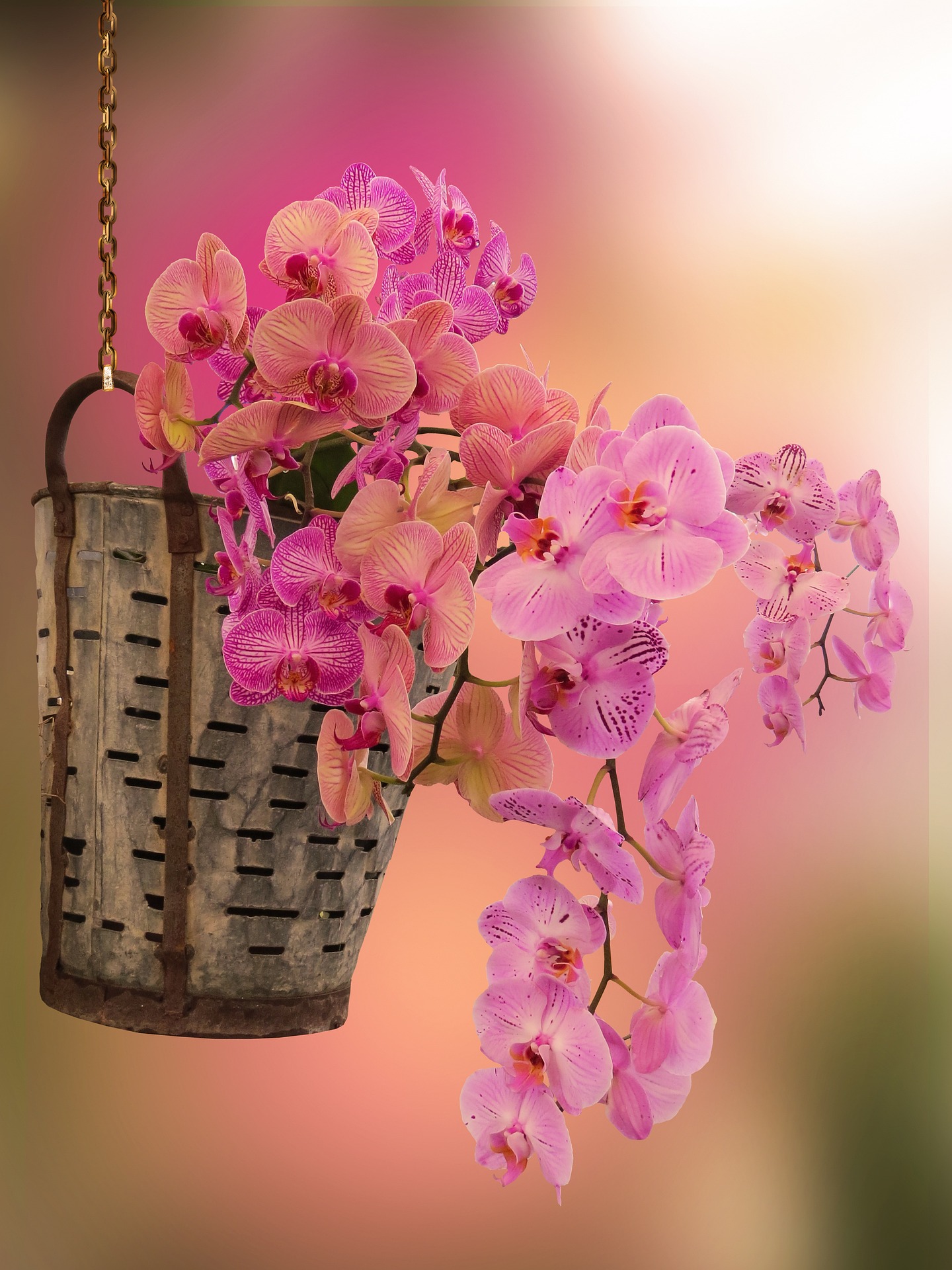How Often Do Orchids Bloom? A Guide to Orchid Flowering Cycles
Orchids are some of the most captivating plants you can grow, and their blooms are the ultimate reward for your care and attention. But if you’ve ever wondered, “How often do orchids bloom?” you’re not alone. Understanding the flowering cycles of orchids is key to keeping them healthy and encouraging them to bloom year after year. In this guide, we’ll explore how often orchids bloom, factors that influence their flowering, and tips to help you get the most out of your orchid’s blooming potential.
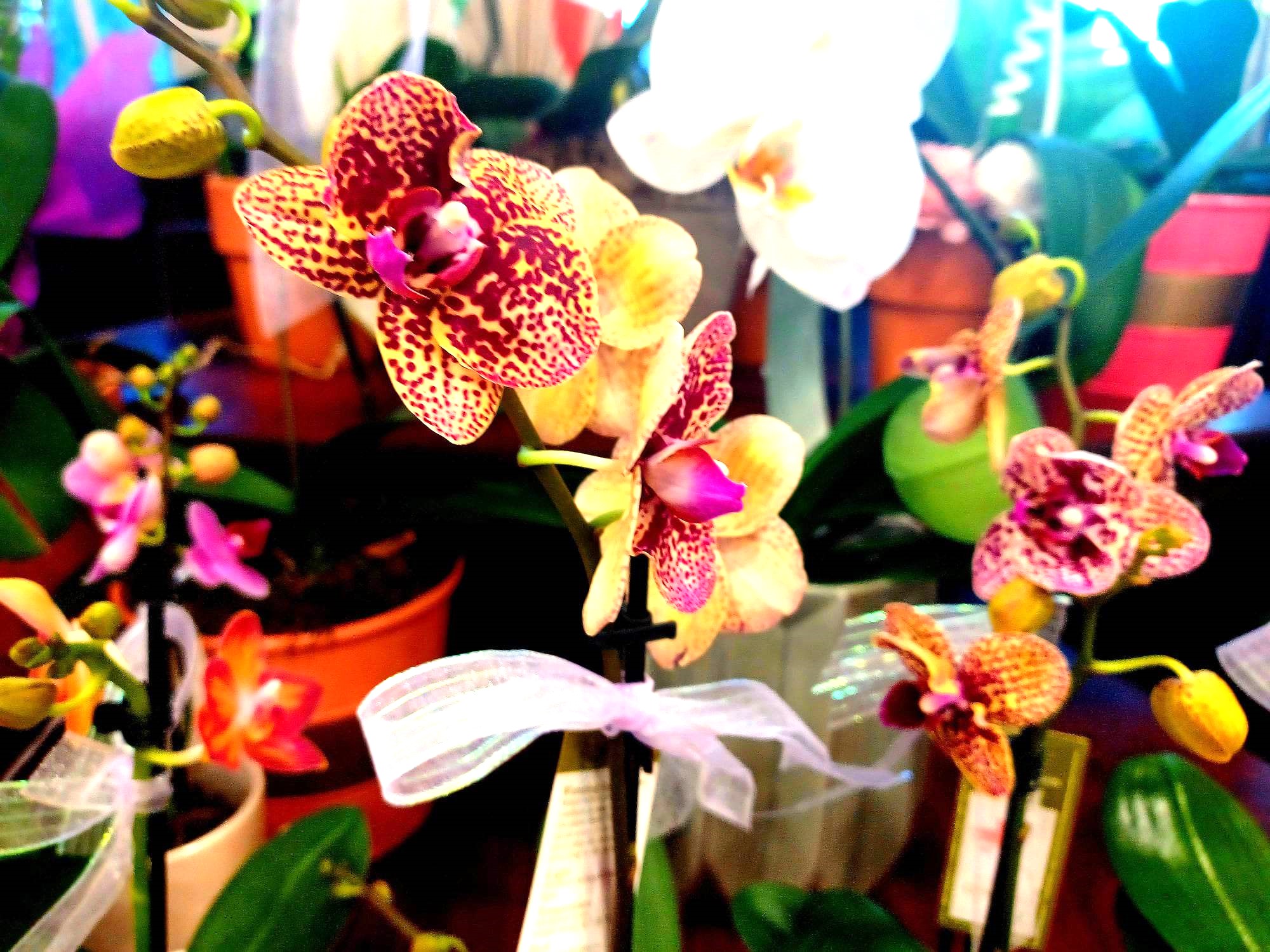
Heavenly Orchids participates in affiliate marketing programs, which means we may earn commissions on qualifying purchases made through our links. We only recommend products we genuinely believe in.
Get Your Free Phalaenopsis Orchid Care Guide Now!
How Often Do Orchids Bloom?
The frequency of orchid blooms depends on the species, growing conditions, and care you provide. Here’s a quick overview of what to expect:
- Phalaenopsis Orchids (Moth Orchids): These popular orchids typically bloom once or twice a year, with each bloom lasting 2-3 months.
- Cattleya Orchids: Known for their large, fragrant flowers, Cattleyas usually bloom once a year, with flowers lasting 3-6 weeks.
- Dendrobium Orchids: These orchids can bloom 1-2 times a year, with flowers lasting 4-6 weeks.
- Oncidium Orchids (Dancing Ladies): These orchids often bloom 1-2 times a year, with flowers lasting 4-6 weeks.
While these are general guidelines, the answer to “How often do orchids bloom?” can vary based on factors like light, temperature, and care routines.
Factors That Influence How Often Orchids Bloom
To maximize your orchid’s blooming potential, it’s important to understand the factors that influence their flowering cycles. Here’s what you need to know:
Light: The Key to Blooming
Light is one of the most critical factors in determining how often orchids bloom. Most orchids need bright, indirect light to produce flowers. Without adequate light, your orchid may grow healthy leaves but fail to bloom.
- Natural Light: Place your orchid near an east- or west-facing window where it can receive gentle morning or afternoon light.
- Supplemental Light: If natural light is limited, consider using a grow light. The plant Shelf with grow lights is an excellent low priced option that provides full-spectrum lighting, mimicking natural sunlight and encouraging consistent blooming.
Understanding Orchid Blooming: The Role of Temperature
Orchids are among the most captivating and diverse flowering plants, with over 25,000 species and countless hybrids. While Phalaenopsis (moth orchids) are a favorite for their elegant blooms and ease of care, many other orchid species also have unique temperature requirements to initiate flowering. Let’s explore how temperature affects orchid blooming and learn about the needs of different orchid varieties.
Why Temperature Matters for Orchids: How Often Do Orchids Bloom Depends on Ideal Conditions
In their natural habitats, such as tropical forests and mountainous regions, orchids experience distinct temperature fluctuations between day and night. These changes signal the plants to transition from growth to blooming phases. For many orchids, a nighttime temperature drop of 10-15°F (6-8°C) is essential to trigger flower spike formation. Without this differential, some orchids may focus solely on leaf and root growth, delaying or preventing blooms altogether.

LEVOIT LV600HH 6L Warm and Cool Mist Ultrasonic Humidifier, Rapid Humidification for Bedroom Large Room, Essential Oil Diffuser, Humidity Setting with Built-in Sensor, Auto Mode, Timer, Remote Control
Here’s a breakdown of how temperature affects various orchid species:
Phalaenopsis, commonly known as Moth Orchids, prefer daytime temperatures of 75-85°F (24-29°C) and nighttime temperatures of 60-65°F (15-18°C). These popular orchids rely on a consistent 10-15°F drop at night to initiate blooming.
Cattleya orchids, known for their vibrant and fragrant flowers, thrive in daytime temperatures of 70-85°F (21-29°C) and nighttime temperatures of 55-60°F (13-15°C), with a moderate nighttime temperature drop being ideal.
Dendrobium orchids have varying temperature needs depending on the variety. Warm-growing Dendrobiums prefer daytime temperatures of 75-85°F (24-29°C), while cool-growing varieties thrive in 60-70°F (15-21°C) during the day. At night, they require temperatures of 50-60°F (10-15°C), often needing a more pronounced temperature fluctuation to stimulate flowering.
Oncidium, or Dancing Lady Orchids, prefer daytime temperatures of 75-85°F (24-29°C) and nighttime temperatures of 60-65°F (15-18°C), with a moderate temperature drop at night to encourage blooming.
Cymbidium orchids thrive in daytime temperatures of 70-85°F (21-29°C) and cooler nighttime temperatures of 50-55°F (10-13°C), especially in the fall, to set flower spikes.
Paphiopedilum, also known as Slipper Orchids, prefer daytime temperatures of 70-80°F (21-27°C) and nighttime temperatures of 55-60°F (13-15°C), thriving with a slight nighttime temperature drop. Vanda orchids, which are warm-growing, prefer daytime temperatures of 75-85°F (24-29°C) and nighttime temperatures of 65-70°F (18-21°C). They benefit from a smaller temperature drop but still require consistent conditions to flourish.
Tips for Managing Temperature
- Indoor Growing: Place orchids near windows where they can experience natural temperature changes. Avoid placing them near heating or cooling vents.
- Greenhouse Growing: Use fans, heaters, or cooling systems to maintain the ideal temperature range for your orchids.
- Seasonal Adjustments: In cooler months, ensure your orchids still receive the necessary temperature drop by adjusting indoor heating or moving them to a cooler location at night.
Watering and Humidity: Striking the Right Balance
Mimicking tropical conditions, from where many orchids originate, is key to their success indoors. Overwatering is one of the most common mistakes orchid owners make, as orchids prefer to dry out slightly between waterings. In their natural habitat, they often grow on trees or rocks, where their roots are exposed to air and dry quickly. To replicate this, ensure proper drainage and avoid letting orchids sit in water. Additionally, orchids thrive in humid environments, typically between 40-70% humidity. Use a humidity tray filled with pebbles and water or a humidifier to maintain these optimal conditions. Pair this with good air circulation, warm temperatures, and bright, indirect light to create a thriving tropical microclimate for your orchids.
Fertilizer: Fuel for Flowers
Regular feeding with a balanced orchid fertilizer can encourage more frequent blooms and healthy growth. The MSU Orchid Fertilizer is widely recommended as an excellent overall choice because it is formulated to meet the needs of most orchids, especially those grown in potting media.
However, different orchid species may have specific nutritional requirements, so it’s important to research the ideal fertilizer ratio for your particular type of orchid. For example, some orchids may benefit from a higher nitrogen ratio (e.g., 30-10-10) during active growth, while others might need more phosphorus (e.g., 10-30-20) to promote blooming. As a general guideline, fertilize weakly, weekly during the growing season, and reduce or stop feeding during dormancy. Always follow the instructions on the fertilizer label and adjust based on your orchid’s response.
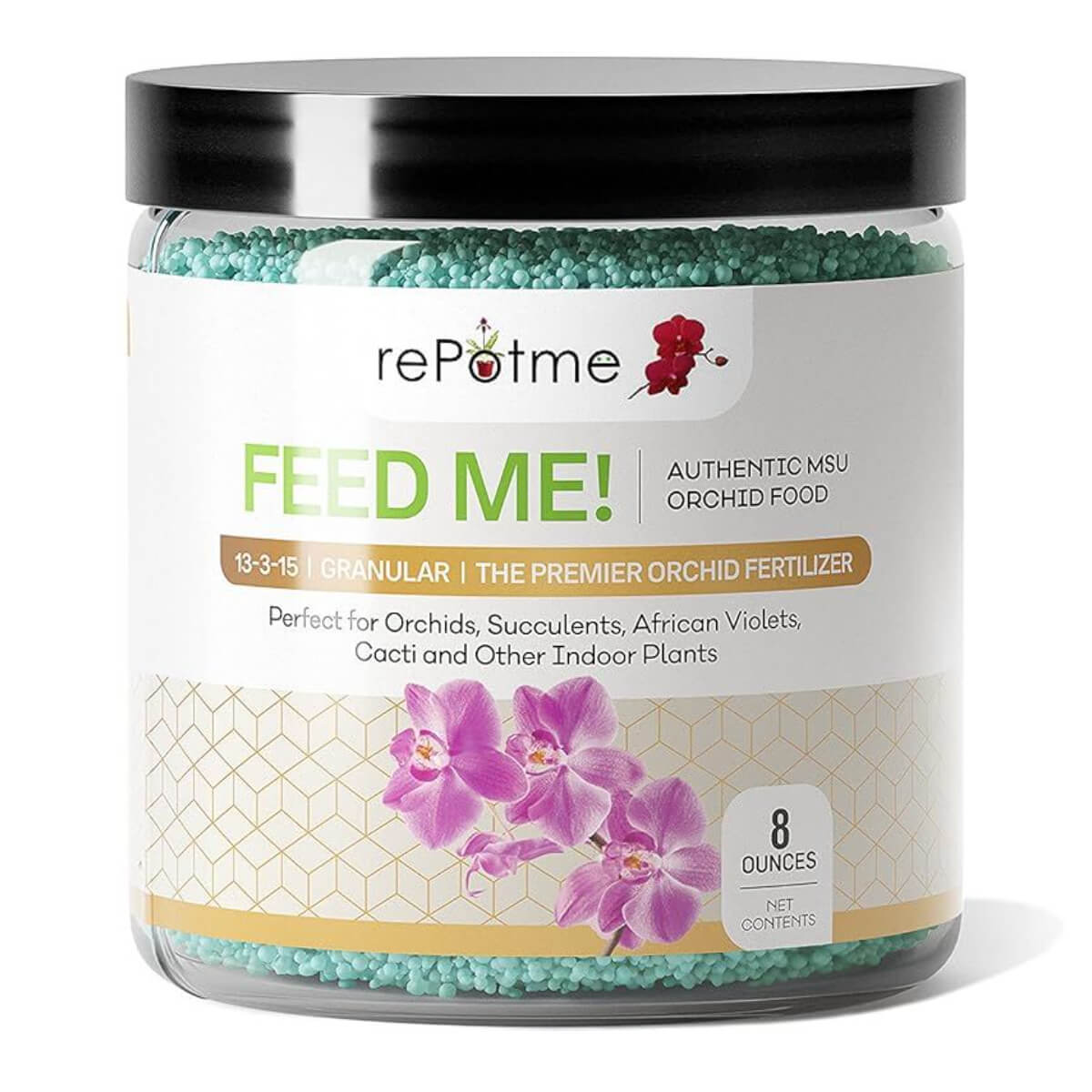
rePotme Orchid Food - Feed ME! MSU Orchid Fertilizer - RO/Rain/Tap Water (8 oz) MSU fertilizer is one of the most recommended fertilizers for orchids because it is specifically formulated to match the nutrient needs of orchids grown in various potting media, providing a balanced blend of essential macro and micronutrients. Its water-soluble formula ensures easy absorption, promoting healthy growth, vibrant blooms, and strong root systems, making it a trusted choice for both novice and experienced orchid growers.
How to Encourage Your Orchid to Bloom More Often
If you’re asking, “How often do orchids bloom, and how can I make them bloom more?” here are some proven tips:
Prune Spent Flower Spikes
After your orchid’s blooms fade, inspect the flower spike. If it’s still green, you can trim it just above a node to encourage a secondary bloom. If it’s brown and dry, cut it back to the base to redirect energy to new growth
Repot When Necessary
Orchids need fresh growing medium every 1-2 years. Over time, the medium breaks down, reducing aeration and drainage. Repotting also gives you a chance to inspect the roots and remove any dead or rotting ones.
Provide Consistent Care
Orchids thrive on consistency. Stick to a regular watering, feeding, and light schedule to keep your plant healthy and stress-free.
Use a Bloom Booster
During the flowering season, switch to a fertilizer with higher phosphorus content (e.g., 10-30-20) to promote blooming. Products like Organic Ready to Spray Orchid Food Mist are specifically designed to encourage vibrant, long-lasting flowers.
Explore More Orchid Care
- How to Make Orchids Rebloom: Learn the secrets to encouraging your orchids to bloom again and again.
- Orchid Care After Flowering: Discover how to care for your orchid once the blooms have faded.
Product Recommendations: Boost Your Orchid’s Blooming Potential
If you’re serious about maximizing how often your orchids bloom, the right tools and products can make all the difference. Whether you’re on a budget or ready to invest in high-end equipment, we’ve curated a range of products to suit every need. From affordable essentials to premium solutions, here are our top recommendations:
Budget-Friendly Option: LED Grow Light Bulb
Price: Under $30
Why It’s Great: This 4000K daylight bulb mimics natural sunlight with a full spectrum (400nm-780nm) and high color accuracy (Ra close to 100), promoting optimal plant growth. Its advanced optical design ensures efficient light distribution, while patented COC technology improves heat dissipation and reliability. Made of flame-retardant, anti-corrosion ceramic, it’s safe and durable. ETL-certified with a 5-year guarantee, it’s a top choice for indoor gardening.
Product Link: LED Grow Light Bulb
Mid-Range Pick: Adjustable Gooseneck Grow Light
Premium Choice: Spider Farmer SF-1000 LED Grow Light
Why It’s Great: A top-tier option for serious orchid growers, this full-spectrum LED grow light mimics natural sunlight and is energy-efficient. It’s perfect for orchids that need consistent, high-quality light to bloom.
Product Link: Spider Farmer SF-1000 LED Grow Light
High-End Investment: Mars Hydro TSW 2000 LED Grow Light
Why It’s Great: Designed for larger setups, this powerful LED grow light covers a wide area and provides intense, full-spectrum light. It’s ideal for orchid enthusiasts with multiple plants or a dedicated growing space.
Product Link: Mars Hydro TSW 2000 LED Grow Light
Why Invest in Grow Lights?
Grow lights are a game-changer for orchid care, especially if you’re aiming to maximize how often your orchids bloom. They provide consistent, high-quality light that mimics natural sunlight, ensuring your orchids get the energy they need to produce stunning blooms. Whether you choose a budget-friendly bulb or a high-end system, the right grow light can transform your orchid-growing experience.
Final Thoughts
So, how often do orchids bloom? While the answer varies by species and care, most orchids bloom at least once a year, with some varieties blooming multiple times. By providing the right light, temperature, and care, you can encourage your orchids to bloom more frequently and enjoy their stunning flowers year-round.
For the best results, consider investing in high-quality products like the Spider Farmer SF-1000 LED Grow Light to give your orchids the light they need to thrive.
